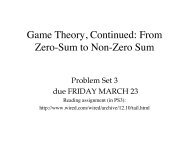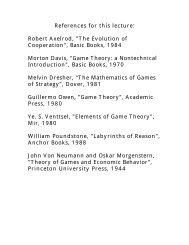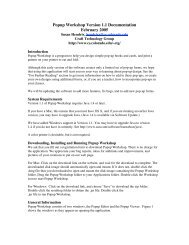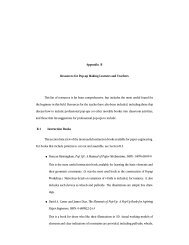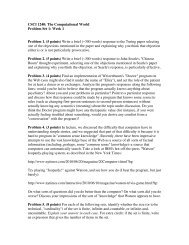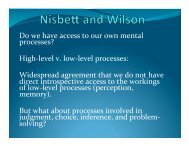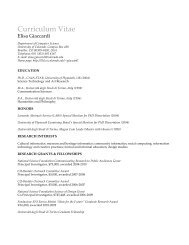A Conceptual Framework for Computer- Supported Collaborative ...
A Conceptual Framework for Computer- Supported Collaborative ...
A Conceptual Framework for Computer- Supported Collaborative ...
Create successful ePaper yourself
Turn your PDF publications into a flip-book with our unique Google optimized e-Paper software.
CSCL at work should provide frameworks to invent alternative social organizations<br />
and new media that will permit the flourishing of deep interdisciplinary specialties<br />
[Derry et al., 2005], as argued <strong>for</strong> by Campbell [Campbell, 2005]: “Even within<br />
disciplines, disciplinary competence is not achieved in individual minds, but as a<br />
collective achievement made possible by the overlap of narrow specialties.”<br />
Campbell’s fish-scale model (an architecture to achieve “collective<br />
comprehensiveness through overlapping patterns of unique narrowness”) provides<br />
a viable path toward a new competence, based on the integration of individual and<br />
social creativity [Fischer et al., 2005].<br />
Distances (across spatial, temporal, and technological dimensions) and diversity<br />
(bringing stakeholders together from different cultures in CoIs) are important<br />
sources <strong>for</strong> social creativity [Fischer, 2005]. Over the last decade, we have<br />
designed and developed socio-technical environments exploring and supporting<br />
different aspects of social creativity including (1) the Envisionment and Discovery<br />
Collaboratory described in Narrative-2; (2) the CreativeIT Wiki to support the<br />
research community in “Creativity and IT”; and (3) collaborated with Google in<br />
analyzing the 3D Warehouse (a set of interconnected tools that include SketchUp<br />
and Google Earth), which stores user-generated 3D models of buildings (and other<br />
artifacts) contributed from participants distributed all over the world. In these<br />
projects, we have studied different aspects of social creativity, including the impact<br />
of cultures of participation, the motivation to contribute, the learning requirements<br />
to become a contributor, and the role of curators to organize the emerging large<br />
repositories.<br />
Narrative-2: Framing and Solving Urban Planning Problems with the<br />
Envisionment and Discovery Collaboratory<br />
The Envisionment and Discovery Collaboratory (EDC) [Arias et al., 2000]<br />
represents a new generation of collaborative domain-oriented design environments.<br />
It shifts the emphasis away from the computer screen as the focal point and creates<br />
an immersive environment in which stakeholders can incrementally create a shared<br />
understanding. It attempts to maximize the richness of communication between<br />
stakeholders in face-to-face interaction, mediated by both physical and<br />
computational objects. It is grounded in Schön’s “reflection-in-action” problemsolving<br />
approach [Schön, 1983] and has been applied to a variety of different<br />
design and decision making problems in urban planning, emergency management,<br />
and transportation planning. Stakeholders using the EDC (see Figure 2) convene<br />
around a computationally enhanced table that serves as the action space. The action<br />
space allows users to manipulate an interactive model of the design problem by<br />
proposing, exploring, reflecting, and critiquing alternative solutions. The horizontal<br />
table is flanked by touch-sensitive vertical tables that serve as the reflection space.<br />
The reflection space displays in<strong>for</strong>mation that is relevant to the context as defined<br />
by artifact constructed in the action space.<br />
Gerhard Fischer 11 Contribution to Book “CSCL at Work”



